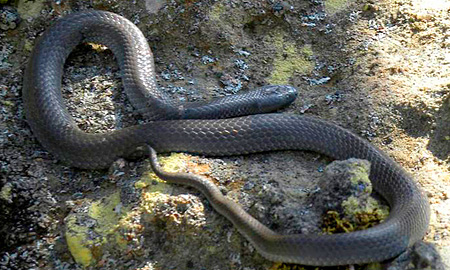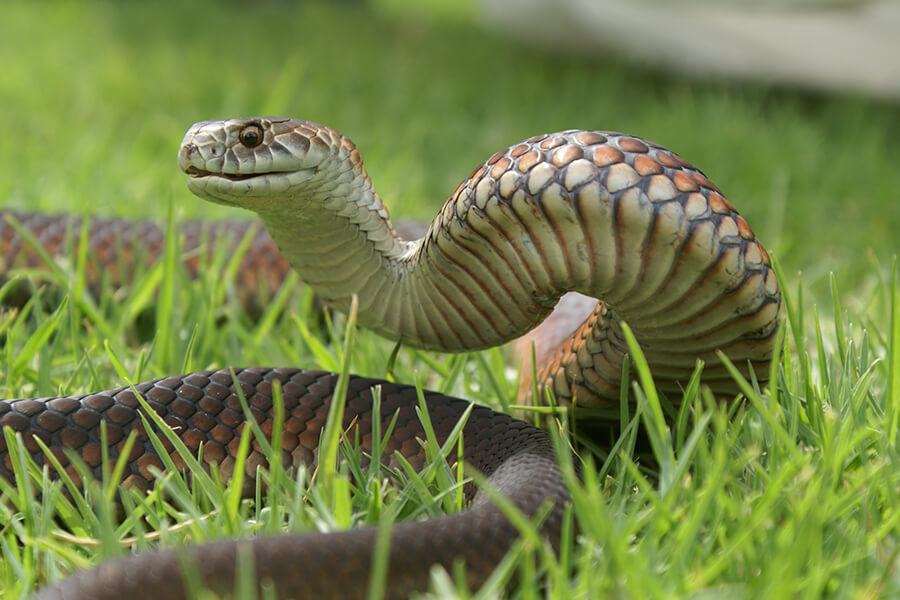Introduction
The tiger serpent is one of Australia's the majority of infamous reptiles, been afraid for its potent venom and hostile temperament. This interesting animal plays an important function in the environment, yet it commonly faces misconceptions that lead to unnecessary fear. In this comprehensive post, we will certainly delve into the world of the tiger snake, exploring its environment, poison qualities, and important emergency treatment methods in instance of a snake bite.
Understanding the Tiger Snake: Habitat, Venom, and Emergency Treatment Essentials
Tiger serpents are mostly located along the southerly coastline of Australia, consisting of Tasmania. They flourish in various atmospheres such as marshes, coastal regions, and even metropolitan locations. Their adaptability makes them effective killers; nonetheless, their distance to human environments commonly results in encounters that can cause bites.
This article intends to debunk tiger snakes by reviewing their environment preferences, examining their poison structure and results on human beings, and offering crucial emergency treatment details for bites.
1. Tiger Serpent Environment: Where Do They Live?
1.1 Review of Tiger Serpent Distribution
Tiger snakes (Notechis scutatus) are largely discovered in southerly Australia and Tasmania. They occupy numerous ecosystems ranging from coastal marshes to freshwater lakes.
- Coastal Areas: Tiger serpents are often spotted near shorelines where they search for fish and amphibians. Wetlands: These locations provide sufficient concealing areas and bountiful prey. Urban Areas: As cities broaden right into all-natural environments, tiger snakes may be seen venturing into suburban yards or parks.
1.2 Preferred Habitats of Tiger Snakes
Tiger serpents favor moist atmospheres where water resources are readily offered. Their habitats usually consist of:
- Marshes: The dense vegetation allows them to ambush target effectively. Swamps: These locations offer sanctuary from predators while giving an abundant hunting ground. Riversides: Water bodies bring in numerous pets which serve as food sources for these snakes.
1.3 Environmental Elements Affecting Habitat Choice
Several factors influence where tiger snakes pick to stay:
- Temperature: Being ectothermic (cold-blooded), they require cozy settings for ideal activity levels. Prey Schedule: High populations of frogs and small mammals bring in these snakes. Shelter: Thick vegetation offers not only as camouflage but additionally as security against potential threats.
2. Are Tiger Snakes Venomous? Comprehending Their Venom
2.1 Composition of Tiger Snake Venom
Yes! Tiger serpents are indeed venomous creatures. Their venom is a complex mix having neurotoxins that can cause paralysis and coagulopathies affecting blood clotting mechanisms.
Key Elements of Venom:
- Neurotoxins: Affect nerve feature resulting in paralysis. Hemotoxins: Damage capillary causing interior bleeding.
Understanding these components helps us value the strength of a tiger snake bite.
2.2 Impacts of a Tiger Snake Attack on Humans
A bite from a tiger snake can lead to extreme symptoms:
- Local Symptoms: Discomfort, swelling, and staining at the bite site. Systemic Signs and symptoms: Nausea or vomiting, throwing up, trouble taking a breath as a result of paralysis or restriction of airways.
Severity Levels
Minor Bite: Local pain without systemic symptoms. Moderate Bite: Systemic symptoms however workable with medical care. Severe Bite: Lethal; calls for prompt clinical intervention.3. Identifying Various Kinds Of Tiger Snakes
3.1 Eastern vs Tasmanian Tiger Snakes
There are two key categories based upon geographic circulation:
Eastern Tiger Snake (Notechis scutatus)
Found along eastern shorelines approximately Queensland.
Tasmanian Tiger Serpent (Notechis scutatus)
Adapted particularly to Tasmania's one-of-a-kind atmosphere with somewhat differing pigmentation patterns.
3.2 Shade Variants in Habitat Preferences
Tiger serpents display significant color variations depending upon their environment:
- Coastal populations often display stripes or blotches for far better camouflage against sandy shores.
4. Behavior Patterns of Tiger Snakes
4.1 Hostility Level
Tiger snakes are known for their hostile actions when intimidated or collared which can lead to defensive strikes if provoked.
4.2 Searching Techniques
They possess amazing agility enabling them to strike swiftly at prey such as frogs or tiny rodents primarily throughout golden hours when they're most energetic-- making them nighttime hunters!
5. Emergency Treatment for Snake Bites: Vital Actions You Need To Know
When it involves managing snake attacks, understanding is vital!
5.1 Immediate Actions After a Bite
If bitten by a tiger snake:
Stay calmness! Panic boosts heart price which spreads out poison faster through your bloodstream.
Apply pressure around the wound using tidy towels-- prevent reducing or drawing out venom!
Remove tight clothing/jewelry near the bite website; swelling might occur rapidly.
Immobilize the affected arm or leg making use of splints preferably-- this limits movement aiding slow down poison spread!
5.2 Getting Medical Help
Seek emergency clinical assistance immediately! Time is King Brown snake bite crucial when dealing with prospective envenomation from tiger serpents!
5.3 First Aid Set Fundamentals for Serpent Bites
Having a fully equipped emergency treatment kit can make all the distinction during emergencies:
|Product|Description|| ------|-------------|| Stress Plaster|Assists immobilize wound|| Sterilized Gauze|For dressing injuries|| Emergency Situation Call Details|Quick gain access to numbers|| Antivenom Details|Understanding Conservation of Australian snakes concerning local antivenoms|
6 FAQs Regarding Tiger Snakes
Q1: Are all tiger snakes dangerous?
A: While all have poisonous capabilities influencing humans dramatically-- most favor avoidance unless threatened!
Q2: Exactly how quickly does tiger serpent poison affect humans?
A: Signs and symptoms might manifest within minutes depending on location & & quantity infused throughout envenomation events!
Q3: Can you endure a tiger serpent bite without treatment?

Q4: What ought to I do if I experience one?
A: Preserve distance & & read more retreat slowly; avoid abrupt motions that may prompt aggression!
Q5: Exactly how typical are bites from tiger snakes?
A: Although experiences happen often-- actual attacks remain reasonably rare due mostly due precautionary procedures taken by homeowners living within influenced ranges.

Q6: Exists an antidote available?
A: Yes! Antivenoms particular for Australian types exist-- medical centers bring these medications prepared when required quickly post-bite incidents!
7 Conclusion
Understanding the details surrounding "Recognizing the Tiger Serpent: Habitat, Venom, and Emergency Treatment Fundamentals" is extremely important not only for individual safety however likewise promoting conjunction with these exceptional creatures living in Australia's landscape! By finding out more regarding their habits & & effective feedback techniques regarding prospective encounters-- we equip ourselves much better versus unnecessary concerns while valuing nature's diversity completely! So allow's embrace education rather are afraid-- it leads in the direction of consistency in between mankind wild animals alike!